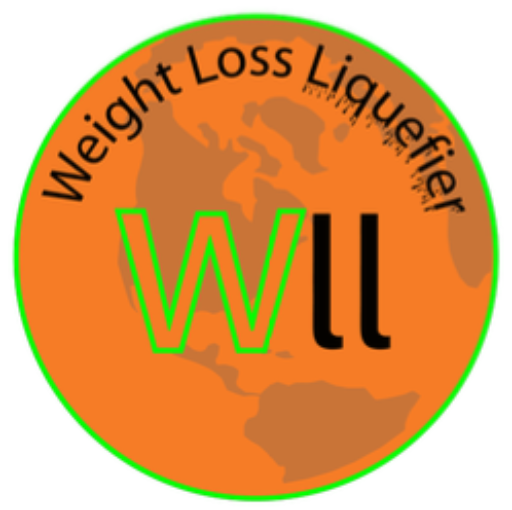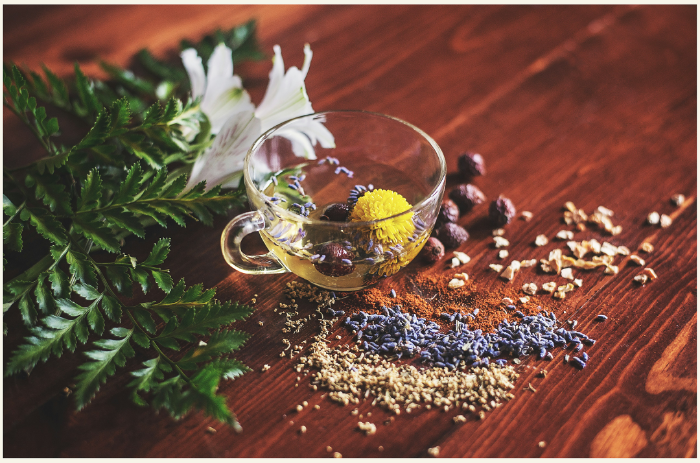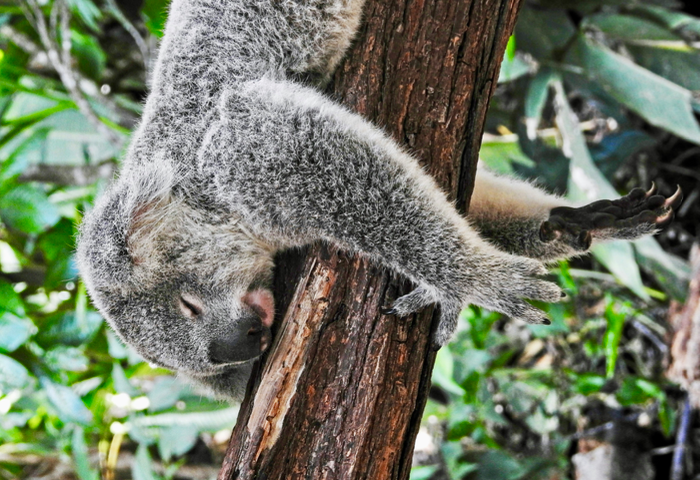Feeling weighed down by constant pain and wary of jumping onto the prescription medication merry-go-round?
Thousands are embracing THC as a natural and potent alternative to traditional pain relief methods. This trend is far from hype; it’s about exploring new paths to wellness.
THC, a compound found in cannabis, is gaining attention for its potential benefits in weight management. Studies suggest that THC interacts with the body’s endocannabinoid system, helping regulate appetite and metabolism.
While it may seem counterintuitive, as cannabis is often associated with increased appetite, THC in controlled doses can aid in reducing cravings and promoting mindful eating. Its anti-inflammatory properties may also support better physical activity levels, complementing weight loss efforts naturally.
As always, moderation and proper guidance are essential when using THC for health benefits.
If you’re ready to step away from the pillbox and seek a more “all-in-one” approach to your aches and pains, I’d say you’re on the right track. Let’s explore how THC might just be the natural path to pain and wellness that you’ve been looking for—backed by both science and satisfied users.
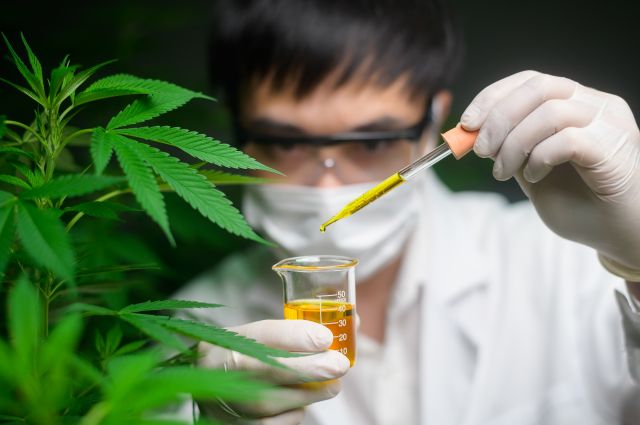
For some extra insights, check out this insightful video on THC’s effects on the brain.
Key Takeaways
- 🤝 THC interacts with the body’s endocannabinoid system, helping regulate pain and restore balance.
- 🌿 It may provide natural relief for chronic pain without the risks of opioids.
- 💤 Offers potential benefits for stress, inflammation, and sleep issues, supporting overall wellness.
- 🧠 Psychoactive effects vary based on individual brain chemistry, dosage, and genetics.
- ⚠️ Responsible use is key, as risks like paranoia or dependence can occur with overuse.
- 🧐 THC’s benefits depend on personal factors, making guidance from a professional valuable.
- ✅ It’s non-lethal, with minimal withdrawal symptoms compared to many other substances.
💡 Always consult a professional for personalized advice.
THC: Understanding the Basics
Before diving into the wellness benefits of THC, it’s important to get a handle on some basics. Knowing where THC comes from, how it differs from its close counterpart CBD, and the historical context of its use can empower you to make informed choices about your health journey.
What is THC?
THC, or tetrahydrocannabinol, is the main psychoactive component found in the cannabis plant, particularly in Cannabis sativa. It’s what gives the “high” feeling often associated with marijuanao use, and it’s at the heart of both controversy and commendation in medical and recreational contexts.
But THC is more than just a compound that offers recreational fun—it has proven medicinal benefits too, particularly in pain management and appetite stimulation. Not sure about cannabis terms? Here’s a helpful resource on marijuana basics that might clear things up for you.
THC vs. CBD
What’s the difference between THC and CBD? While both are cannabinoids from the same plant, they have distinct effects on the body.
THC is infamous for its mind-altering capabilities, attaching itself to receptors in the brain, particularly ones that impact pleasure, memory, and coordination.
This offers not just pain relief, but also a sense of euphoria, which can enhance mood—often compared to a soothing balm for mental stressors.
On the flip side:
CBD (cannabidiol) doesn’t have psychoactive properties. This makes it more attractive for those looking for anxiety or pain relief without the high.
It’s like choosing between an espresso shot (THC) or a chamomile tea (CBD)—each offers something unique based on what you’re searching for. Cannabis for beginners offers insight into more distinctions.
Clink the link button ⬇️ for bundles & sets, gummies, topicals, tincture oils, and sprays.
**Here’s a little transparency: Our website contains affiliate links. This means if you click and make a purchase, we may receive a small commission. Don’t worry, there’s no extra cost to you. It’s a simple way you can support our mission to bring you quality content.**
THC History

THC’s journey through history is as colorful as the plant itself. Cultivated for thousands of years, cannabis was initially used for textiles and ropes before its psychoactive properties were discovered.
Ancient cultures, from Asia to the Middle East, revered its potential for spiritual rituals and medical healing. Fast forward to the 20th century, THC’s reputation took a nosedive with prohibition and stigma in the West.
However, in recent decades, scientific studies and changing laws have helped rejuvenate interest and respect for its therapeutic potentials.
Many are now realizing, hey, there’s more to this plant than meets the eye, and culture is slowly catching up. For those interested in the full timeline, a comprehensive government fact sheet offers a deeper dive.
Understanding THC’s role in pain relief might encourage you to take a fresh look at your wellness journey—or maybe even rethink how to properly diet if you’re battling mental cravings.
Let’s explore these findings with curious minds and little worry as we expand our view on health.
Exploring THC Products
There’s more to THC than meets the eye, especially when you consider the multitude of formats available in today’s market. From tasty edibles to versatile oils, THC products promise not just variety but also potential health benefits. Here’s what you need to know.

Types of THC Edibles
Ever imagined a world where your sweet tooth and smart health goals could harmoniously coexist? Enter THC edibles, a delicious gateway to exploring THC’s potential. Gummies and chocolates are particularly popular. Why?
- Gummies provide a fun, chewable experience that’s discreet and easy to consume. They’re often available in a range of flavors and dosages, giving you control over your intake and the ability to tailor effects based on your comfort level.
- Chocolates take it a step further, combining rich flavors with a calming effect. Luxurious, isn’t it? These make for an indulgent treat, slowly releasing THC into the bloodstream for a prolonged, gradual high. Learn about different forms of marijuana edibles.
Both these forms are metabolized differently from smoking, offering potentially longer-lasting effects that can be useful for sustained pain relief throughout the day.
THC Oils and Tinctures
For those of you valuing versatility, THC oils and tinctures might just be the answer. Incredibly adaptable, you can:
- Place a few drops under your tongue for rapid absorption and a quick onset of effects.
- Incorporate them into foods or drinks, much like you would add vanilla extract when making your favorite cookies. This can be a subtler, delayed release for lasting relief.
Their benefits extend beyond their format flexibility. Oils and tinctures often come with a much more controlled concentration of THC, allowing for precise dosage management. This precision offers users an ideal way to start slow and gauge personal tolerance.
These are a few oils I have tried and feel they’re worthy to bring you relief:
Ultra High Strength Hemp Oil for Body & Mind
Joint + Muscle Daily Anti-Inflammatory – Natural Herbal Blend Liquid Supplement for Pain Relief
Cannabi Relief Oil 3300mg |Pain, Stress, Sleep, Calm, Focus, Immune System, Mood
**As an Amazon Associate I may earn from qualified purchases. If you make a purchase through these links, I may earn a commission at no extra cost to you.**
THC Vape Products
If vaping sounds like an appealing method for you, you’re in good company. This form of THC consumption is all about immediacy and control. Some people prefer it because:
- It offers quick absorption into the bloodstream, making it a go-to option for instantaneous relief from pain or anxiety.
- There’s a range of device options: from sleek pens for easy portability to larger setups designed for more complex usage.
The key here is moderation and understanding the product power profiles—the trickier part of the picture. In detailing the diverse forms of cannabis consumer goods, this in-depth guide proves enlightening.
Exploring your THC options might feel right when sifting through strategies for a more natural approach to managing whatever troublesome aches seek refuge in your frame. Embrace what’s available, and tailor choices to suit your journey toward wellness.
THC Consumption Strategies

Navigating the world of THC consumption can feel like opening a treasure chest brimming with possibilities. There’s no one-size-fits-all. From smoking to eating and everything in between, it’s about finding what fits best with your lifestyle and needs.
How to Use THC: Outline Different Consumption Methods
Curious about the different ways to use THC? Here’s a tour of the most popular methods. There are mainly four categories: inhalation, oral, sublingual, and topical.
- Inhalation Methods: Smoking and vaping are quick-absorbing, favored for their rapid effects. There’s a tactile satisfaction to it, reminiscent of sipping hot cocoa on a chilly evening. Key difference? Vaping heats THC to release vapor and is often considered smoother on the lungs. For more details, check out this guide to cannabis consumption.
- Oral Consumption: Edibles, anyone? From brownies to capsules, the choices are almost endless. They offer a slow, prolonged release, similar to how gentle waves keep lapping at the shore long after the high tide. Keep in mind that edibles can take a while to kick in—patience is key.
- Sublingual Options: Tinctures fall into this category and involve placing drops under the tongue for absorption. It’s like taking a shortcut, the express lane directly into your bloodstream.
- Topicals: These aren’t for getting high but for relief. Creams and balms infused with THC are applied to the skin, turning pain relief into a spa ritual.
Various methods can suit different needs—whether you’re seeking instant relief or looking for a gradual, mellow experience.
THC Dosage Guide: Dosage Tips for Beginners and Experienced Users
Now that you know how to consume THC, let’s talk about dosage—a crucial yet often overlooked aspect. It’s the seasoning of your THC experience.
For newcomers, my advice is to start low and go slow. Imagine you’re at a buffet; you don’t load your plate the first time around; you taste-test first. Begin with:
- Microdosing: This means around 1-2.5mg for edibles or a single puff of a vape. Ease into contouring your high levels gradually.
- Increase gradually: Once acclimated, increase bit by bit until you find that sweet spot.
For seasoned users, dose adjustment might involve some experimentation. Beyond knowing your tolerance, consider the form of THC and the active compounds unique to each strain. Always keep an eye on how your body reacts and adjust accordingly.
Smoking vs. Vaping: Pros and Cons of Both Methods
Wondering whether to spark up or charge up? Let’s weigh the options.
- Smoking:
- Pros: Quick effect, no charging needed. It’s the traditional, unfiltered experience.
- Cons: Produces harmful tar and smells strong. Think of it as a trail of breadcrumbs left wherever you go.
- Vaping:
- Pros: Smoother on the lungs, less odorous, and the equipment is becoming as sleek as that new smartphone.
- Cons: Requires a device and sometimes balancing that menu-driven vapor can feel like upgrading your software.
Smoking vs. vaping? It’s a personal choice, one of soul vs. tech, but understand what each entails to find your best fit.
Edibles vs. Smoking: A Comparative Analysis
Ever struggled choosing between cake and ice cream? Look into edibles versus smoking.
- Edibles:
- Pros: Discreet, smoke-free, and long-lasting effects—a marathon, not a sprint.
- Cons: Takes time to onset, unpredictable, sometimes akin to stepping into a funhouse where the mirrors aren’t exact reflections of what you expect.
- Smoking:
- Pros: Immediate effects and historically revered.
- Cons: Not ideal for everyone’s lungs, reminding us of grandpa’s old cigar—that love-hate affair.
Both have their places and purposes, like yin and yang. Choose wisely, considering situations, preferences, time availability, and personal health.
Taking that leap into the magic of THC can uplift, relieve, and reconnect with the calm you seek, echoing similar guidance you’d find on Weight Loss Liquefier’s site for an adaptable shift.
Whether you are sipping tinctures or relishing in the aroma of a vape, explore diligently, and listen to your body’s whispered reactions.
THC Benefits

It’s no secret that THC has slowly been making its way into the limelight, especially as more people seek out natural solutions to their everyday health concerns.
Rather than merely being a “buzz” word, the therapeutic benefits of THC stand on firm scientific ground. Let’s take a deeper dive into what makes THC not just a recreational choice but a potentially transformative element in health care.
Medical Benefits of THC
To appreciate the medical benefits, one must look beyond its psychoactive reputation. THC—tetrahydrocannabinol—not only alters consciousness but also offers several health benefits. Studies report its potential in managing a variety of symptoms associated with chronic conditions. For instance, it’s known to:
- Relieve pain: Easing symptoms for those with arthritis, migraines, and neuropathic pain.
- Improve appetite: Often a savior for those going through chemotherapy or battling eating disorders.
- Mitigate stubborn nausea: Especially helpful for cancer patients undergoing treatment.
Medical marijuana: benefits and side effects—These benefits stem from THC’s ability to bind with receptors in the brain and immune system, effectively reducing symptoms.
For more information on thc benefits, you can read this article on 7 potential health benefits of Cannabis.
THC for Pain Relief
Pain relief is where THC truly shines. Many people prefer this natural remedy over heavy-hitting prescriptions that come with a laundry list of potential side effects.
Connecting to pain pathways, THC offers relief by altering the body’s perception of discomfort—like flipping a switch that dims overwhelming sensations.
Consider conditions plagued by chronic pain, like fibromyalgia or MS; THC has shown efficacy in studies at reducing these debilitating symptoms. You may think of it as putting a gentle pillow between you and the sharp edges of unyielding pain.
THC for Anxiety and Sleep
An understated charm of THC lies in its ability to promote relaxation—it’s the warm blanket in the frosty room of anxiety.
Sleep can often feel elusive, but THC turns out to be a key for unlocking restful cycles. A modest dose assists in improving sleep quality without the hangover-like fuzziness that some sleep aids include.
Is it any surprise people experiencing anxiety find solace in THC’s calming arms? It’s like your high school counselor, guiding the nervous noodles into heart-steady zen. However, finding the exact right dose may be the puzzle piece that impacts efficacy positively.
THC for Nausea
For those battling persistent nausea, THC can be life-changing.
It’s not simply about masking the sensation—it addresses the issue at its core, calming those tumultuous scenes in the stomach battlefield. Small doses offer relief without sending one soaring into the more psychedelic interactions THC can provide.
Ideal for people undergoing relentless seas of nausea brought on by cancer treatments or chronic gastritis. THC sometimes feels less like a band-aid and more like a peacemaker for uneasy stomachs, providing comfort in otherwise nausea-dominated days.
If you’re seeking a friendly reprieve from nausea, this could be the simple friend in unfamiliar seas. Read more about the health benefits of cannabis.
By perusing these aspects of THC’s capabilities, you open doors to broader therapeutic choices. Choices that don’t shack you to pharmaceutical titans but rather slide you into a potentially nourishing experience.
The Benefits and Cons
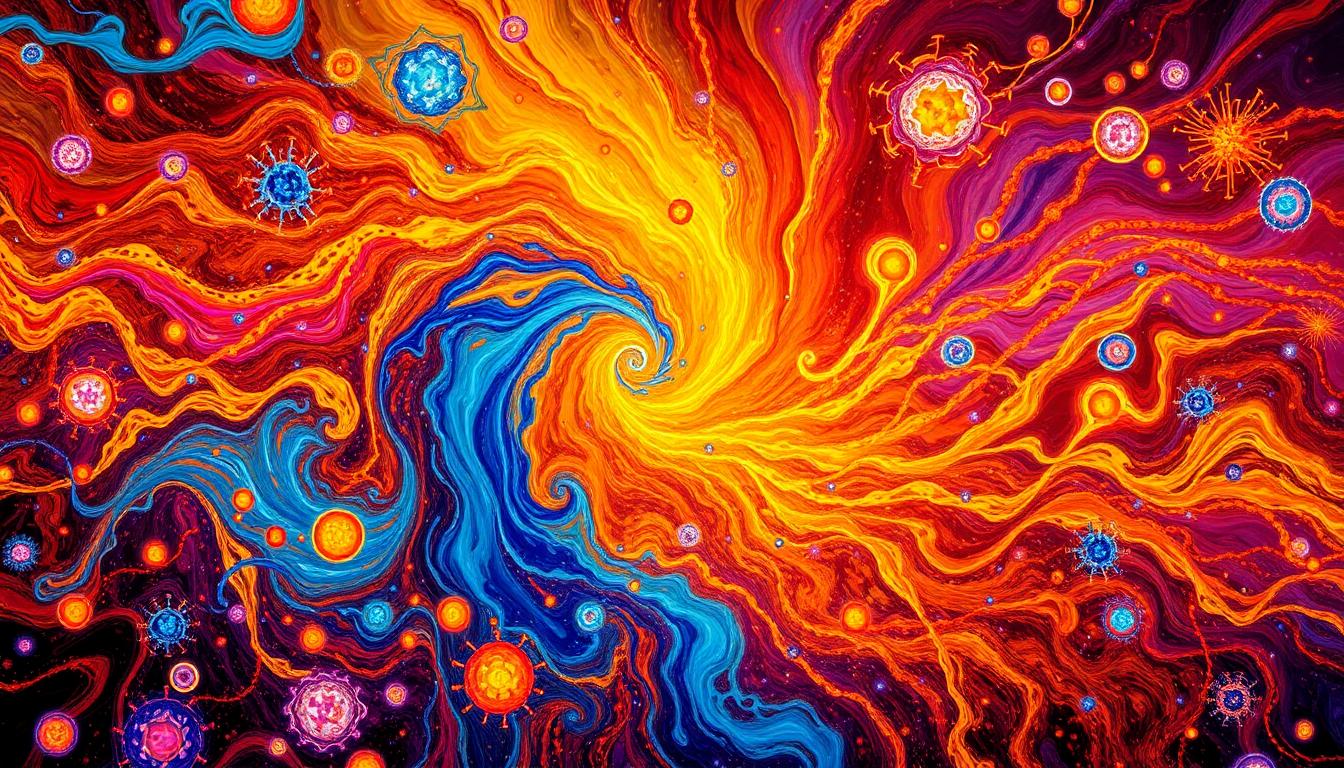
Inside the colorful world of THC, it’s important to understand both its benefits and its potential downsides. While THC can be helpful for pain relief and overall wellness, being aware of the possible side effects and long-term implications is essential for making smart health choices as a part of healthy lifestyle strategies.
Side Effects of THC: What users should watch for
THC, with its pain-alleviating and wellness magic, isn’t without its share of side effects. It’s like finding a hidden gem in a beach—sparkling, yet it might scratch if you’re not cautious. Here’s the lowdown on what you could encounter:
- Dry mouth and Dry eyes: Non-drinkers, welcome hydration’s significance.
- Increased heart rate: That heart pitter-patter can be concerning.
- Memory loss or Reduced concentration: It can blur desires to multitask.
For further reading on potential side effects and more, check out this resource from the Mayo Clinic.
Is THC Addictive?: Explore dependency risks
Dependence on THC can be as stealthy as ivy climbing a garden wall: unnoticed initially but steady over time. The question often emerges: Is THC addictive? The answer rests somewhere in human response to THC:
- Tolerance over time: Requiring more to achieve the same effect.
- Withdrawal symptoms: Irritability, sleep challenges, or decreased appetite when stopping usage.
It’s wise to remain mindful—like tracking steps with a pedometer—to manage frequency and quantity. While THC dependency might not be as intense as opioids, awareness is key. Per explore, more detailed info is available through the SAMHSA website.
Long-Term Effects of THC: Discuss potential long-term health issues
Long-term THC use may unfold less-visible, more subtle brushstrokes affecting your health over time:
- Respiratory issues: Comparisons to smoking pose risks.
- Cannabinoid Hyperemesis Syndrome: A rare, perplexing pattern of nausea.
- Cognitive impact: Youths, in particular, might experience affected learning abilities.
Feeling like a slow, steady rain, it’s non-intrusive, yet consequences compound quietly. Future effects often simmer beneath, reminding us to measure and modulate our choices carefully. Exploring THC’s long game can guide clearer decisions, supported by reliable resources like this guide from Cleveland Clinic.
Staying informed about the possible risks allows users to weigh benefits against what they could face in this path with THC, empowering them to take forward steps confidently—you’ve got this!
Legal and Regulatory Aspects of THC

***DISCLAIMER*** I AM NOT A LEGAL PROFESSIONAL
The legal and regulatory framework around THC is a patchwork of international and national laws. If you’re trying to make sense of it all, let me guide you through this challenging yet crucial journey.
Understanding these laws can empower you to navigate the world of THC without unnecessary worry.
Is THC Legal?
On a global scale, THC’s legal status is a mixed bag. In countries like Canada and Uruguay, they’re enjoying the sunshine with a fully legalized status. Europe, though varied, has nations tiptoeing into legality with caveats—considering medical use mostly.
Within the United States, it’s a tug-of-war situation. Federally, THC remains classified as a Schedule I substance, drawing parallels with substances like LSD in legal strictness.
But here’s where the fun begins—states themselves are deciding to dance to a different beat. Over 30 states permit medicinal use and varying degrees of recreational access. Check out the latest FDA regulation on cannabis for more detailed federal insights.
Laws by State
Peeling back the curtain on THC laws reveals a spectrum that’s anything but uniform across US states.
Consider the red tape like the many hues in an artist’s palette—no two states hold identical views. States like California and Colorado are on the progressive end, boasting legalized recreational and medical use. On the other hand, Idaho keeps a firm handle, barring all non-medical uses strictly.
These nuances matter if you’re residing or planning a cross-country trip with some THC in your backpack. If you’re exploring options, diving into published resources about state laws can be illuminating, ensuring you’re prepared wherever your travels may lead.
THC and Driving Laws
As we cruise into driving laws, consider THC use and driving like mixing oil and water—complicated and usually advised against. THC can significantly impair reaction time and judgment—a concerning combo when behind the wheel. Each state has its own interpretation of what’s permissible.
For instance, while a state like Nevada might employ strict per se limitations (akin to blood alcohol laws), others take a more lenient, case-by-case stance. Whether you’re looking for specific legal thresholds or just trying to stay safe, it’s important to understand your local laws regarding THC and driving.
For those just stepping into their relationship with THC, awareness of these boundaries is your first line of defense. Consuming responsibly isn’t just about comfort—it’s crucial for safety. Here’s more in-depth content if you’re keen on understanding these nuances further.
THC and Health
Exploring the world of THC is like opening a door to potential relief and transformation. As more people look for natural ways to manage health, THC finds itself in the spotlight. Let’s examine how this compound impacts various areas of well-being and where it holds promise.
THC and Mental Health: Effects on mood disorders
When it comes to THC and mental health, it’s akin to navigating a complex maze. Mood disorders, such as anxiety and depression, are widespread, and individuals suffering from these often see THC as a beacon of hope.
The compound interacts with the endocannabinoid system in a way that may regulate mood, much like the cavalry arriving just in time during your favorite action movie. While many users report relief, the scientific community remains divided about its long-term effectiveness.
Importantly, THC can cause mood alterations which might exacerbate certain conditions if not carefully dosed. It’s essential to tread with awareness, understanding both the potential uplift and the unintended dip. For further insights, check out this comprehensive analysis by NIDA.
THC for Cancer Treatment: Summarize research and feasibility
Regarding cancer treatment, THC is more than just a supporting cast member—it’s stepping into a lead role.
Research has shown that THC can mitigate chemotherapy-induced nausea and stimulate appetite, turning gloom into a brighter storyline.
There is ongoing exploration: could THC even directly influence tumor growth? The answer isn’t straightforward since the studies, much like a manual written in a foreign script, require further translation into everyday applications.
In practice, many find help integrating THC with traditional treatments, like chemotherapy. The dual approach can outshine a singular focus, drawing parallels to utilizing all gears for a smoother bike ride uphill.
Further reading about cannabis’s medical applications is outlined in this detailed exploration by NCIB.
THC and Depression: Explore potential benefits
Actively juggling life with depression can feel like an ongoing circus performance. Enter THC—a balancing beam, albeit with a gentle but vital caution tape. By potentially influencing the serotonin system, THC acts on emotional balance and moments of joy.
While it’s not an instant antidepressant, its role as a mood charger lures many seeking solace away from pharmaceutical heavyweights.
The overall promise of THC extends beyond solitary relief, potentially complementing existing therapies and interventions.
People describe experiencing fewer dark clouds and longer bursts of sunshine thanks to choice dosages of THC. Nevertheless, ensuring professional guidance can prevent the delicate balance from toppling over into a complete emotional landslide.
More information about broader effects can be seen in the CDC’s perspective on cannabis health effects.
In understanding how THC that fits into a health-conscious lifestyle, remember that personal experiences can vary as much as scenic routes on a cross-country drive.
It’s about finding your comfort level and setting off with the right tools—research, due diligence, and professional advice. The allure of natural health continues to captivate, urging deeper understanding and shared experiences.
THC Market and Industry

The landscape of the THC market today is vibrant and dynamic, mirroring the ever-changing perceptions and legal frameworks around it. This section dives into the key trends, notable players, and future projections for the THC industry, offering a glimpse of where this booming market might head next.
Industry Trends: Discuss current and emerging trends within the market
The THC market is experiencing significant growth and diversification, driven by evolving consumer preferences and regulatory changes.
First is the expansion of legalized recreational and medical cannabis markets across the U.S. and other parts of the world, which is fueling rapid growth.
Market Growth
In the United States, the cannabis market was valued at approximately $33.60 billion in 2023 and is projected to grow at a compound annual growth rate (CAGR) of 12.1% from 2024 to 2030, potentially reaching $76.39 billion by 2030. (U.S. Cannabis Market Size)
Globally, the legal cannabis market is expected to expand at a CAGR of 25.3% from 2022 to 2030, aiming for a market size of $134.4 billion by 2030.
This interest is partly driven by the continuous lift in regulatory barriers opening the way for further clinical studies. Globally, the cannabis market is estimated to grow exponentially, hitting up to $444.34 billion by 2030 (Cannabis Market Size & Growth).
Emergence of THC-Infused Beverages
There’s a notable rise in THC-infused non-alcoholic beverages, catering to consumers seeking alternatives to alcohol. These drinks, incorporating ingredients like THC and CBD, offer relaxation and euphoria without the negative effects of alcohol. Brands such as Cann, STIIZY, and Kin Euphorics are leading this trend.
Despite their growing popularity, medical experts caution that these beverages might still cause side effects like nausea or headaches and have the potential for addiction.
Increased Consumption Patterns
Recent research indicates a significant increase in daily or near-daily marijuana use in the U.S., with a 15-fold rise reported. In 2022, daily marijuana consumption surpassed daily alcohol use for the first time.
Hemp-Derived THC Products
Cannabis companies are exploring hemp-derived THC products to generate new revenue streams, especially in light of stalled federal legalization efforts. Notable companies, including Green Thumb Industries and Tilray Brands, have introduced such products.
However, differing state regulations and federal legal classifications pose challenges.
The THC market is rapidly evolving, characterized by substantial growth, innovative product offerings like THC-infused beverages, and shifting consumption patterns. As the market expands, navigating regulatory landscapes and addressing health considerations remain pivotal.
THC Companies to Watch: Identify noteworthy players in the industry

The THC industry is teeming with companies making impressive strides in innovation and expansion.
Among them, Canopy Growth stands out as a heavyweight, pushing boundaries with a diverse portfolio that stretches across North America and Europe. Their strong focus on both medical and recreational cannabis speaks volumes about their commitment to meet varying customer needs.
Another significant player is Curaleaf, distinguished for its expansive footprint within the U.S., offering a wide array of THC products from tinctures to edibles, and most recently entering the European market. Their continuous efforts in research also set them apart as leaders in the medical cannabis arena.
Don’t overlook emerging powerhouses such as MedMen, which taps into the high-end cannabis retail experience, making cannabis shopping akin to a luxury retail experience rather inviting.
Future of the THC Industry: Make predictions and projections
Predicting the future of THC involves assessing current growth patterns alongside evolving consumer attitudes and legal landscapes.
By 2030, the global cannabis market may fully open up new frontiers, with ongoing legislation and cultural acceptance playing pivotal roles in this progression. Efforts to standardize products, ensure compliance, and address public health concerns might ultimately fortify the industry’s credibility and expansion.
Legal advancements across Asia and Africa could also add to market elevations by enabling fresh opportunities for cultivation and distribution in regions previously untapped.
Furthermore, technology advancement, focusing on cultivation techniques and THC extraction processes, promises to increase efficiency, ensuring higher yields and superior product quality.
These changes predict a THC market thriving not just as a major economic force but as a transformative wellness provider essential to modern lifestyle and healthcare alternatives.
The future seems poised with promise, leaving those keeping a pulse on the industry in anticipation of waves of opportunity and innovation around each corner. These insights may help balance the journey into more holistic health avenues.
THC Research and Science

When you think about THC, you might picture its recreational uses or its buzzworthy role in pain relief.
Yet, beneath its alluring surface lies a deep reservoir of research and science.
Understanding how THC interacts with our bodies unveils a panorama of medicinal potential, touching not just physical symptoms but emotional ones too. Let’s continue to unravel what science has unveiled so far.
Current Research Studies
If you’re like me, you’re probably curious about what science is saying lately about THC. Well, current studies fling open the doors to its varied uses and effects.
Researchers have unearthed significant insights, indicating that THC may serve as a key player in treatments beyond pain, such as nausea, anxiety, and neurological disorders.
- Pain Management: According to a National Academies report, there’s significant evidence to support THC’s role in alleviating chronic pain, particularly in adults. This is groundbreaking for those combating relentless discomfort without relying on pharmaceuticals.
- Nausea and Vomiting: When it comes to chemotherapy-induced nausea, THC seems to offer a lifeline. Research supports its role in markedly reducing these symptoms, creating a more bearable experience for those undergoing treatment.
Science doesn’t just stop there. Researchers at the University of Chicago analyzed how different demographics react differently to THC, especially its nuanced effects on anxiety levels—see their findings that shed light on broader applications.
THC and the Brain
So, what’s really happening when THC interacts with our brains? Picture it as a symphony conductor—brilliantly orchestrating how we experience pleasure, memory, and time.
But it’s not without quirks. This interaction primarily hinges on the compound’s affinity for brain receptors known as CB1, taking you on a ride that can blur pain and shape perceptions.
- Cognition: THC can impact short-term memory, which many individuals either love or get frustrated by. This effect can be a tool for those looking to temporarily shift their mental gear away from nagging pains or stress.
- Brain Reward System: Often compared to chocolate’s soothing effect, THC activates dopamine neurons, setting off a cascade that enhances pleasure and mood.
But it’s not always idyllic; the research varies due to different strains and dosages, like a dissonant note in what should be a harmonic symphony. The risks are nuanced but manageable when approached with understanding and moderation. You can explore a thorough analysis via the CUIMC’s ongoing studies.
Endocannabinoid System (ECS)
The endocannabinoid system, or ECS as it’s commonly hailed, is where the magic of THC unfolds within the body. Imagine it as a complex network—much like the internet—to which THC taps into, modulating various physiological processes from rebellion-inducing addiction to soothing sleep patterns.
- Homeostasis: The ECS is pivotal in maintaining balance across your bodily systems. THC mimics naturally occurring compounds in your body that regulate mood, appetite, and sleep, carrying a duality of steering and respecting what your body truly needs.
- Interaction with Receptors: By binding primarily with CB1 and CB2 receptors located throughout the nervous and immune systems, THC initiates diverse effects that are both therapeutic and psychoactive.
This pairing displays the elegant dance between nature and chemistry, underscoring why so many seek THC as a holistic option for wellness enhancement.
With deeper recognition of THC’s contributions, perhaps you’re primed for newfound empowerment against this backdrop of evolving science.
More foundational understanding is discussed through the FDA’s ongoing research, reflecting the complexity of regulatory frameworks aligned with scientific finds.
Taking healthier strides with THC isn’t just possible; it’s promising, filled with curiosity-driven exploration.
THC Culture and Lifestyle

Exploring the vibrant culture around THC, we uncover its influence stretching from the art world to community gatherings. As perceptions shift, THC isn’t just crossing borders—it’s establishing deep cultural roots that redefine experiences.
In Popular Culture: THC’s influence and portrayal in media
Not only does THC affect how individuals perceive the world, but it also shapes media narratives and stereotypes.
From movies like “Pineapple Express” to music references, THC is woven into the creative fabric of entertainment, often depicted as a catalyst for humor and adventure. Film and television use this compound to portray laid-back, humorous lifestyles, providing audiences a glimpse into both misconceptions and realities of cannabis culture.
Curious about cultural trends? Cannabis culture gives a detailed overview.
THC and Creativity: Discuss THC’s role in inspiring artistic pursuits
Creative endeavors have long been intertwined with THC use. Musicians, artists, and writers alike have hailed its ability to unlock new realms of imagination.
Why might that be? Some users suggest enhanced sensory perception, allowing for deeper immersion into original creative thought.
While the debate over real versus perceived inspiration continues, many artists attribute THC as a pathway through blocks to new creative terrains—a brush that paints vividly broad strokes on the canvas of the mind.
THC Events and Festivals: Highlight cultural celebrations surrounding THC
Cultural enthusiasts revel in THC-focused festivals, where communities come together in vibrant celebration.
From the iconic Amsterdam Cannabis Cup to local 420 gatherings, these events highlight the plant’s intricate tapestry of community, advocacy, and enjoyment. It’s about more than consuming; it’s an opportunity for engagement, featuring music, workshops, and open discussions.
These festivals illuminate how THC inspires freedom of expression and unification, fostering a culture that intertwines modern-day enthusiasm with fundamental tribal gatherings. Intrigued by these meetings and want a taste of lifestyle influence? Check out how cannabis lifestyle weaves into daily lives.
The evolving landscape of THC culture fosters a journey of discovery—one where traditions solidify and innovations flourish.
Whether navigating media representation or indulging in community festivals, I find the THC lifestyle an enriching glimpse into not just a subculture but a growing narrative of wellness and unity.

When exploring the complexities of THC, it’s essential to address common questions that might arise. Whether you’re new to THC products or a seasoned explorer, having reliable answers can shape a more informed experience.
What is the legal age to purchase THC products?
Most U.S. states set the age at 21, similar to alcohol restrictions, but it’s important to check your local regulations which can sometimes side with the wise perspective you’re more used to seeing with driving licenses.
For instance, adults aged 21 or older can legally purchase cannabis in states such as Colorado or California, but remember—it’s not just a free-for-all across the board. Over in Illinois, you can deep dive more into specific legal logistics in their FAQs section.
How does THC affect appetite?
Ever wondered why reaching for snacks may seem so natural after a dose of THC? Known colloquially as “the munchies,” THC stimulates areas of the brain associated with appetite.
THC interaction with receptors in the brain that route signals for hunger, turning drab meals into small feasts. When you’re steering away from prescribed dietary interventions yet needing to nudge that appetite, THC could be that gentle reminder your belly might need.
These effects give hope, especially for those wrangling with health-related weight loss or users going through treatment that affects eating.
Are there THC-free alternatives?
Yes, indeed, if you seek THC-free alternatives without sacrificing comfort or relief, you have options.
Products featuring CBD (cannabidiol) are a popular choice, appealing to individuals disinclined toward psychoactive effects yet still wanting some cannabis’ therapeutic benefits. CBD provides soothing relief without the baggage of a high, sort of like enjoying a cool breeze without the thunderstorm.
Most wellness stores have hopped aboard the CBD express, offering tinctures, capsules, and edibles to comfortably and legally integrate into your daily rituals if you’re steering clear of mind-altering profiles.
Can THC be detected in drug tests?
THC can linger in the body and be detectable for days or even weeks after use, depending on factors like dosage, frequency of use, and one’s metabolic rate. Just like that seemingly polite lingering guest, its stay is directly proportional to personal consumption habits and physiological response.
Simply put, if you have an upcoming test, planning becomes pivotal to ensuring peace of mind, ensuring time comfortable enough to clear THC from your system.
How to choose the best THC product for personal use?
Start by identifying your goals: Are you seeking pain relief, relaxation, or maybe something to tune in focus? Knowing this will guide you demystifying which product class serves you best, from edibles and tinctures to topicals and vapes.
Product strength varies, like finding your balance between chill and thrill, don’t hesitate to test different product types within safe dosages. If you’re eyeing weight relief without engaging the mind, here’s a throwback remedy to speak to your path: Choosing THC might echo the allure of a holistic routine seen in physical health approaches.
Confined by curiosity, trying new approaches is what leads us to be discerning explorers!
The journey into THC often begins scattered, much like flipping through an extraordinary puzzle book that slowly reveals moments of unexpected clarity page by page.
Understanding it leads not just to curiosities satisfied, but empowerment in personal decisions. Let’s navigate the landscape expertly, while choosing where THC delicately fits within our redefined wellness trail.
Conclusion
In my quest for a natural path to pain relief and wellness, I see a dynamic landscape of potential benefits. It’s not only about exploring what this compound can offer but also about making informed decisions.
Choosing to explore options like THC is about stepping away from endless prescriptions and finding comfort in alternatives. The insights drawn from understanding its effects can be life-changing, offering a fresh outlook on pain management and overall well-being.
In this journey, I’m driven by the strength of informed choices, seeking harmony between relief and my health goals. I remember that balance is key.
Whether it’s through adjusting dosages or finding the right form—from oils to edibles—tailoring my approach will ensure I’m moving in the right direction safely.
I’m not alone on this path. Many are opting for THC as an ally in their wellness journeys. Just like yoga helps enhance our flexibility and relief, THC has potential to weave beautifully into our holistic health narratives.
If you’ve tried THC or are considering it, let your curiosity guide you and always prioritize informed and thoughtful engagement.
So, what are you waiting for? Dive in, explore, and maybe share your experience with like-minded souls seeking relief in the wonders that nature offers.
With the right foundation, you might just find the balance you’re seeking is closer than you think.
